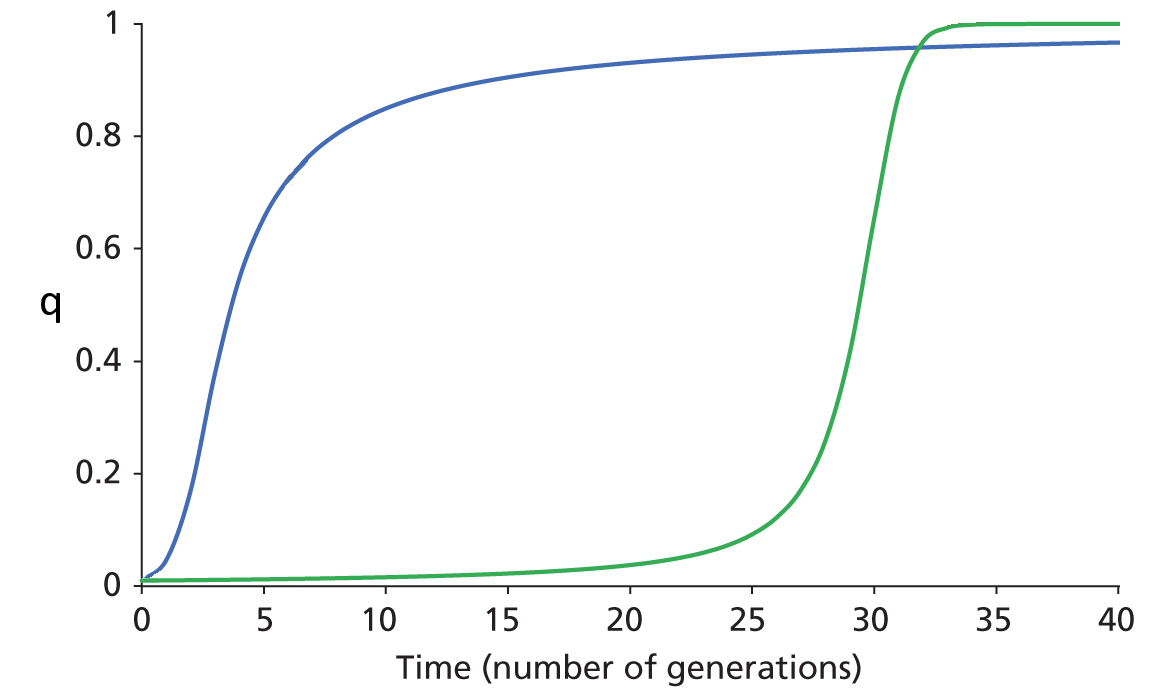
Change in frequency
of a rare allele under Positive
Directional Selection
Dominant &
Recessive cases
In a single-locus model
with two alleles A and B, let
initial q = f(B)
= 0.001. The Blue curve shows the
case where B is dominant
to A (WBB
= WAB >
WAA). The
Green curve
shows the case where
B is recessive to A
(WAA
= WAB < WBB). The
differences between the shapes of the curves reflect how
mean population fitness
(![]() ) varies over time as q
= f(B)
) varies over time as q
= f(B) ![]() 1.0.
1.0.
Remember: the dominance
relationships of the two alleles with respect to fitness
are fixed genetically, according to whether the AB
heterozygote is more similar to the AA or BB
homozygotes. It is not determined by the phenotypic
values themselves.
The information in the graph
also shows the fate of a common allele
under negative directional
selection: invert the curves top to bottom on
the Y-axis, and relabel q as p.That
is, the behavior of the two alleles at a locus are complementary
for any particular dominance model. HOMEWORK: Show that this is
true.